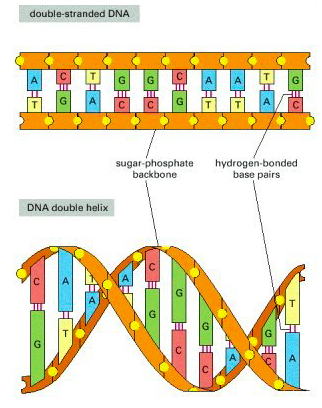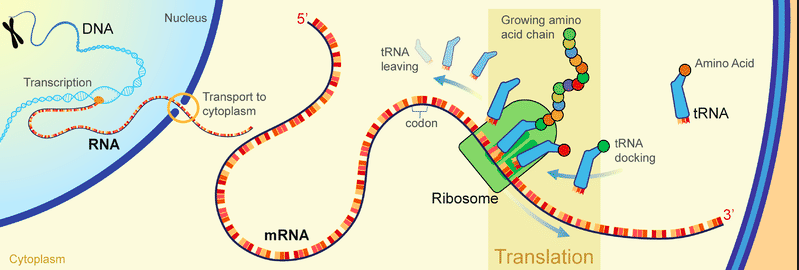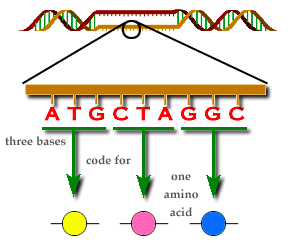DNA
Genome
The genetic material in the nucleus of a cell is composed of a chemical called DNA. DNA is a polymer made up of two strands forming a double helix. The DNA is contained in structures called chromosomes. A gene is a small section of DNA on a chromosome. Each gene codes for a particular sequence of amino acids, to make a specific protein.
The genome of an organism is the entire genetic material of that organism. The whole human genome has now been studied and this will have great importance for medicine in the future.
Here is the importance of understanding the human genome.
- Search for genes linked to different types of disease.
- Better understanding and treatment of inherited disorders.
- Use in tracing human migration patterns from the past.
What Is DNA
- DNA is a polymer made from four different nucleotides. Each nucleotide consists of a common sugar and phosphate group with one of four different bases attached to the sugar.
- DNA contains four bases, A, C, G and T. In the complementary strands a C is always linked to a G on the opposite strand and a T to an A.
- A sequence of three bases is the code for a particular amino acid. The order of bases controls the order in which amino acids are assembled to produce a particular protein.
- The long strands of DNA consist of alternating sugar and phosphate sections. Attached to each sugar is one of the four bases. The DNA polymer is made up of repeating nucleotide units.
Protein Synthesis
During protein synthesis, transcription takes place where RNA polymerase binds to non-coding DNA located in front of a gene. RNA polymerase produces a complementary mRNA strand from the coding DNA of the gene. Translation then begins to take place as the mRNA attaches to the ribosome. Then there is the coding by triplets of bases (codons) in the mRNA for specific amino acids. Amino acids are then transferred to the ribosome by tRNA. Finally, amino acids link together to form polypeptides.
Coding
Each gene leads to a set of instructions to create a specific protein. These proteins are vital as it controls many aspects of the cell. The bases must group together in triplets in order for genes to code for proteins. Each of these triplets of bases codes for a specific type of amino acid. The amino acids can only be made based on the number and order of the base triplets. Amino acid molecules then join up into a long chain, so that a protein molecule is create. The number and order in which the amino acids are put together will then specify which protein is to be created. Enzymes are a common and vital protein that is created from these long chains of amino acid molecules.
Genetic Variants
Genetic variants in the non-coding DNA of a gene can affect phenotype by influencing the binding of RNA polymerase and altering the quantity of protein produced. Genetic variants in the coding DNA of a gene can affect phenotype by altering the sequence of amino acids and therefore the activity of the protein produced
A change in DNA structure may result in a change in the protein synthesised by a gene. Proteins are synthesised on ribosomes, according to a template. Carrier molecules bring specific amino acids to add to the growing protein chain in the correct order.
When the protein chain is complete it folds up to form a unique shape. This unique shape enables the proteins to do their job as enzymes, hormones or forming structures in the body such as collagen. Mutations occur continuously. Most do not alter the protein, or only alter it slightly so that its appearance or function is not changed. A few mutations code for an altered protein with a different shape. An enzyme may no longer fit the substrate binding site or a structural protein may lose its strength.Not all parts of DNA code for proteins. Non-coding parts of DNA can switch genes on and off, so variations in these areas of DNA may affect how genes are expressed.
- What are the four bases?
- Your answer should include: A / T / C / G
- When lots of amino acids are chained up together, what does it make?
- Your answer should include: Protein / Molecule
- How many bases code for an amino acid?
- 3


